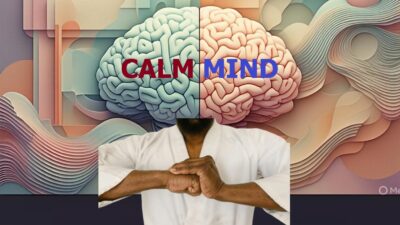(mindfulness examples): simple introduction
The notion of mindfulness stirs a potent blend of inner calm and focused awareness that can reshape one’s daily experiences. In these pages, you will explore detailed, and practical strategies for cultivating mindfulness in real life. Each narrative unfolds moment by moment, inviting you to experience how a simple shift in attention can unlock clarity, reduce stress, and deepen self-understanding. As you delve into these insights and actionable steps, you will discover that mindfulness is not an abstract concept but a practical art that empowers you to embrace every moment with full awareness and without judgment.
Table of contents
1. Defining mindfulness
mindfulness or Mindful Presence means being fully aware of where you are and what you are doing at the very moment. Rather than allowing thoughts of the past or future to dominate, you focus on the present—the sensations, emotions, and actions as they occur. This practice requires not only concentration but also an attitude of non-judgment. Therefore, when you engage with tasks or interactions, you observe your inner and outer experiences without labeling them as “good” or “bad.” Instead, you accept them as they are, which can lead to a profound transformation in how you respond to daily challenges.
To illustrate, consider these fundamental practices:
- Active Observation: Notice every detail during everyday tasks.
- Non-Judgmental Awareness: Accept feelings and thoughts without criticism.
- Focused Engagement: Fully invest in your current activity, whether it is a conversation, a meal, or a walk.
Moreover, establishing a simple routine that includes moments of mindful reflection during the day can gradually reinforce this state of awareness. Each practice, however small, builds your capacity to return to Mindful Presence even during stressful periods.
2. Real-Life examples Mindful Presence in Action
2.1 Mindfulness examples: A Transformative Workplace Experience
Imagine a busy morning where a single moment of mindfulness alters the entire day. Ali, an office employee facing a barrage of meetings and pressing deadlines, felt overwhelmed by the constant rush. At one point, after an intense discussion with a colleague, he paused in the quiet solitude of his workspace. Instead of letting mounting stress dictate his actions, he closed his eyes briefly, took a deep breath, and focused on the simple rhythm of his breathing. Each inhale and exhale grounded him in the present moment. Consequently, he managed his tasks with renewed energy and clarity, handling challenges more effectively as he proceeded with calm determination. This instant, captured as a mindful pause, became a turning point that exemplified the transformative power of mindfulnesse. (Mindfulness examples 1)
2.2 Mindfulness examples: Mindfulness in Everyday Conversations
Consider the scenario of Sara, who cherishes her conversations with a close friend over coffee. Instead of merely waiting for her turn to speak, she listens with undivided attention. With every word her friend utters, Sara notices subtle changes in tone and expression. She feels the warmth, the pauses, and the inflections that reveal deeper emotions. By embracing Mindful Presence during these interactions, she not only strengthens her relationships but also cultivates empathy and understanding. Her deliberate focus transforms what might seem like an ordinary chat into an enriching, heartfelt moment. Therefore, even in the simplest exchanges, a mindful approach can ignite profound connection and mutual respect. (Mindfulness examples 2)
2.3 Mindfulness examples: The Serenity of Solitary Reflection
Imagine stepping out into nature during a quiet afternoon. Omar decides to take a short walk under a canopy of trees. As he strolls along a winding path, he consciously observes the vibrant greens of the leaves, the gentle rustling of branches, and the cool breeze that brushes against his skin. With each step, he practices Mindful Presence by tuning into the sensations in his feet and the rhythm of his heartbeat. During this reflective journey, his mind quiets, and he feels an overwhelming sense of peace and gratitude. Consequently, he discovers that solitude, when experienced mindfully, nurtures personal growth and emotional resilience. This vivid experience emphasizes that being present in nature can instigate a remarkable clarity of thought and spirit.(Mindfulness examples 3)
3. Implementing Mindful Presence in Daily Routine
Bringing Mindful Presence into your daily life need not be complicated. Instead, you can achieve it through small, deliberate changes in your routines. The following step-by-step guidelines illustrate how to incorporate mindful practices into everyday life:
- Morning Reflection: • Begin your day by sitting quietly for a few minutes. • Focus on your breathing and allow your mind to settle on the present. • Gradually build this routine, ensuring you feel calm before embarking on your day.
- Mindful Eating: • During meals, place aside distractions and immerse yourself in the act of tasting each bite. • Notice textures, aromas, and flavors. • This simple act heightens your sensory awareness and encourages physical and mental well-being.
- Mindful Pauses at Work: • Take short breaks between tasks to breathe deeply and center your thoughts. • Use these pauses to assess your current feelings and realign your focus on the present. • Such breaks can notably reduce stress and improve productivity.
- Evening Wind-Down: • End your day with a few moments of reflection. • Consider what you have experienced throughout the day without judgment. • This practice helps consolidate the benefits of Mindful Presence and fosters a peaceful state of mind.
To further clarify these steps, observe the table below:
| Step | Activity | Expected Benefit |
|---|---|---|
| Step 1 | Morning Reflection | Enhanced calm and day-start clarity |
| Step 2 | Mindful Eating | Improved sensory awareness and digestion |
| Step 3 | Work Pauses | Reduced stress and increased focus |
| Step 4 | Evening Reflection | Better mental consolidation and peace |
Each of these actionable steps emphasizes that Mindful Presence requires intentional practice. Moreover, small shifts in routine can lead to significant improvements in concentration and overall well-being.
4. Myths and Truths About Mindfulness
Despite the growing interest in mindfulness, several common misconceptions persist. It is essential to distinguish between myths and the practical truths behind Mindful Presence:
- Myth 1: Mindfulness Requires Long Hours of Meditation. Truth: Even a few minutes of dedicated attention can initiate real change. Simple practices during daily activities can be as effective as longer sessions.
- Myth 2: It Is a Complex or Spiritual Ritual. Truth: Mindful Presence is accessible to everyone. It involves straightforward awareness practices that do not require any elaborate preparation or spiritual context.
- Myth 3: Mindfulness Is Only for Stress Relief. Truth: Although mindfulness does lower stress, it also enhances cognitive clarity, emotional balance, and interpersonal relationships. Therefore, its benefits are multifaceted.
- Myth 4: It Demands Immediate Perfection and Complete Focus. Truth: Mindfulness is a gradual practice that accepts fluctuations in attention. You improve with consistent practice, embracing moments of distraction as part of the learning process.
These clarifications ensure that you understand the practical nature of Mindful Presence without getting entangled in unrealistic expectations. Furthermore, dispelling such myths empowers you to adopt a more flexible and sustainable approach.
5. Scientific Insights and Studies on Mindful Presence
Research has shown that consistent mindfulness practice can yield measurable benefits for cognitive and emotional health. For instance, studies indicate that short, daily mindfulness exercises help lower levels of stress hormones and boost concentration. In controlled experiments, participants who engaged regularly in awareness practices reported improved memory, reduced anxiety, and better emotional regulation. Additionally, brain imaging studies have revealed that such practices can enhance areas responsible for attention and self-awareness.
Consider these key findings:
- Improved Focus: Research highlights that individuals practicing Mindful Presence exhibit enhanced concentration capabilities.
- Emotional Regulation: Regular mindful exercises contribute to a more balanced emotional state.
- Better Interpersonal Skills: Participants in mindfulness studies often report improved communication and empathy.
Moreover, a recent study with 150 participants demonstrated that even short mindfulness sessions of 10 minutes yielded satisfactory improvements in addressing stress. Such findings underscore that adopting a mindful approach need not be time-consuming to be effective. Consequently, these scientific insights provide a solid foundation for integrating Mindful Presence into your everyday life.
6. Conclusion
In summary, the journey toward Mindful Presence begins with a single, deliberate step into the present moment. By consciously engaging with your surroundings—whether at work, in conversations, or during moments of solitude—you develop a heightened awareness that transforms everyday life. The real-life stories of individuals embracing mindfulness illustrate that even brief pauses can yield profound benefits. Moreover, by dispelling common misconceptions and relying on clear, actionable steps, you learn that mindfulness is accessible and transformative.
As you move forward, remember that cultivating Mindful Presence is an ongoing process. Embrace each moment with curiosity and compassion, and gradually, you will discover that this simple practice empowers you to live more fully and authentically. Therefore, take a deep breath, appreciate the now, and let Mindful Presence guide every step of your journey.
References
Warning: The provided links lead only to the specified content. Other areas of those sites may contain material that conflicts with some beliefs or ethics. Please view only the intended page.
- Mindful Ideas (2025) – “45 Mindfulness Examples to Transform Your Everyday Life” https://www.mindful-ideas.com/what-are-examples-of-mindfulness-in-everyday-life/
- Mindful Journey Blogs (2024) – “Reader Stories: Real-Life Experiences with Mindfulness” https://mindfuljourneyblogs.com/blog/reader-stories-real-life-experiences-with-mindfulness/
- It’s All You Boo (2023) – “15 Effective Examples of Mindfulness in Everyday Life” https://itsallyouboo.com/examples-of-mindfulness-in-everyday-life/






